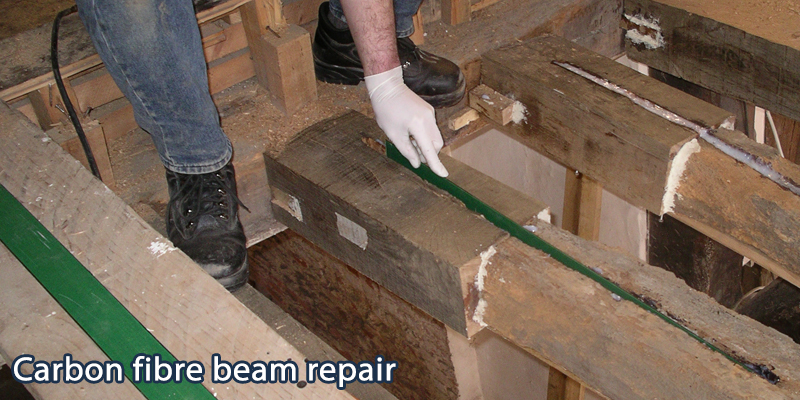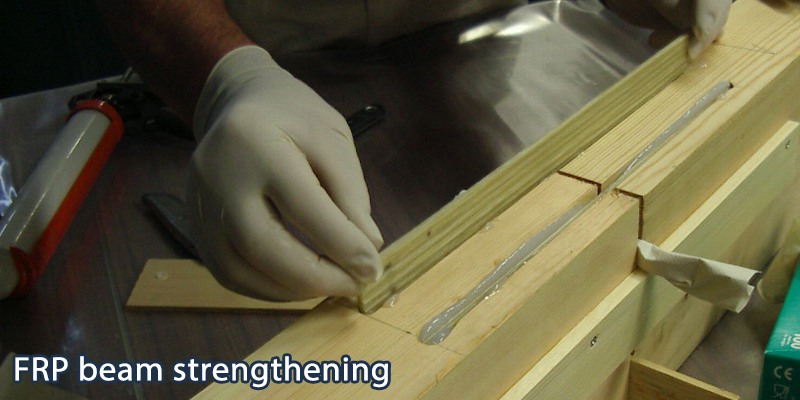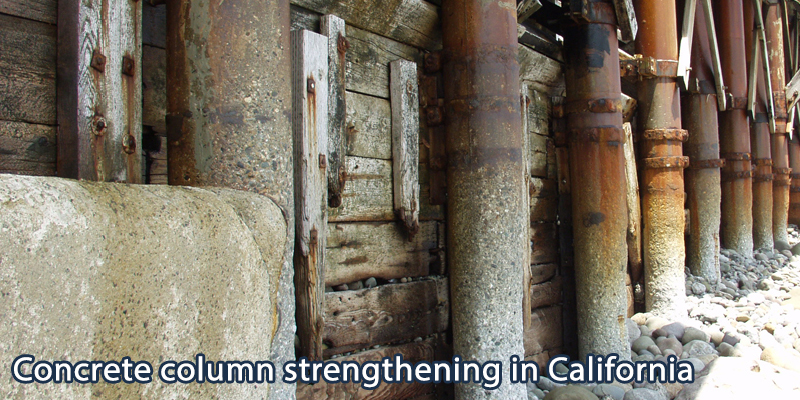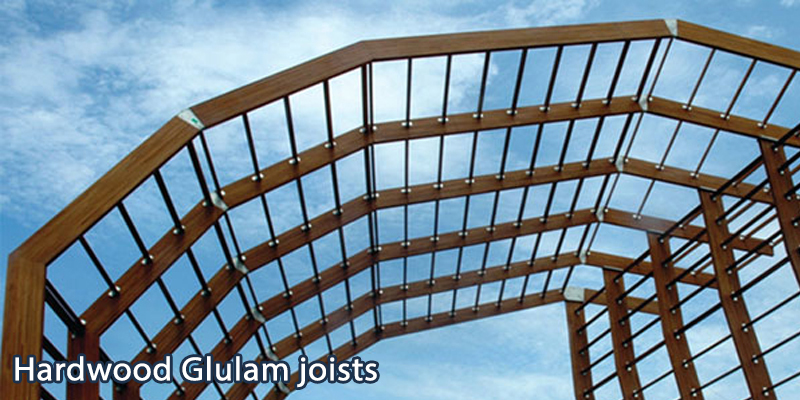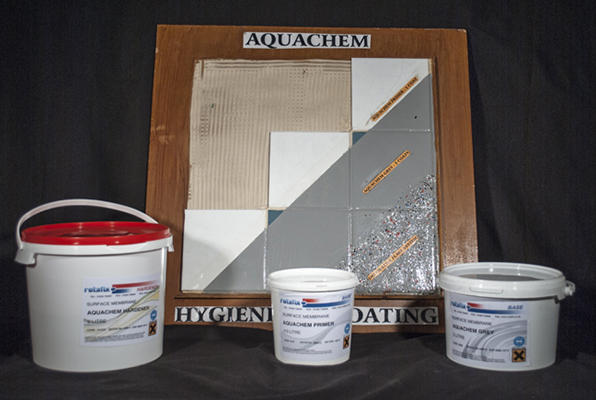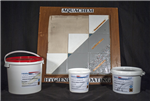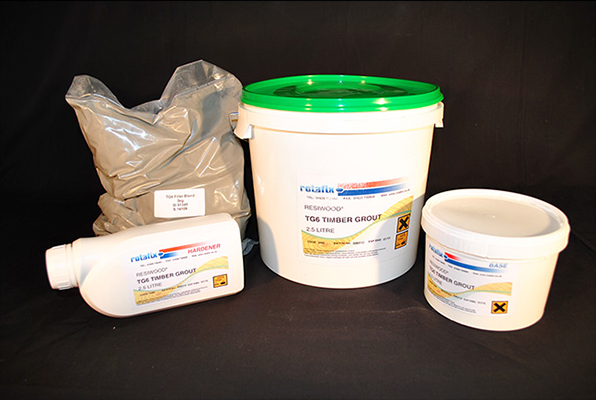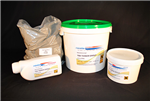Time and date
CONSTRUCTION DIRECTORY
Rotafix Ltd Contact Details
Address
Rotafix House
Abercraf
Abercraf
South Wales
Swansea
SA9 1UR
UK
Opening Hours
Thursday
08:00 am-05:00 pm
Monday
08:00 am-05:00 pm 12:00 am-12:00 am
Tuesday
08:00 am-05:00 pm
Wednesday
08:00 am-05:00 pm
Thursday
08:00 am-05:00 pm
Friday
08:00 am-05:00 pm
Saturday
Closed
Sunday
Closed
Other Dates
About Rotafix Ltd
Rotafix are pioneers and specialists in the structural repair of timber and masonry. Members of our technical team are here to share their experience with you, assisting you in overcoming structural challenges.
We provide solutions to simple and complex structural repairs as well as bonding and coating projects across the globe. We work closely with architects, structural engineers and contractors on heritage and historic buildings as well as on new construction projects.
We have developed a comprehensive range of adhesives, grouts, fillers and ancillary methods. Our materials have been extensively tested by universities, laboratories and users, so you can confidently rely on our products and our systems.
Products
Rotafix manufacture a broad range of specialist products for the maintenance, restoration, preservation and new build construction sectors.
The Rotafix method is a globally accepted method of connecting sections of timber using plates or rods in combination with adhesives that have been specifically designed for the environment and application.
Rotafix are recognised as pioneers and experts in the field of timber engineering, we have applied our technical expertise to also manufacture a range of products that are high performance with minimal impact to the environment.
The comprehensive Rotafix range includes products used for :-
Rotafix products have been designed to be simple to use but are high performance in specification.
Please browse our products by choosing a product category section from the menu.
Survey
Are you confronted with the need for structural repairs but unsure as to how they are best resolved?
Here at Rotafix we have developed solutions for many structural issues relating to timber, concrete and damp proofing in residential, commercial, historic and religious buildings.
We are regularly contacted by building control officers, surveyors, structural engineers, contractors and building owners to provide alternative solutions to a range of problems including the ripping out and replacing of timber elements, dampness and water ingress in buildings, and damage to concrete floors.
Training
Timber Engineering Training
Our Timber Engineering 1-day Training Courses are suited to :
Understanding the Rotafix Resiwood Repair methodology will give you a set of skills with practical applications in restoration, heritage, historic and new build timber engineering.
We provide solutions to simple and complex structural repairs as well as bonding and coating projects across the globe. We work closely with architects, structural engineers and contractors on heritage and historic buildings as well as on new construction projects.
We have developed a comprehensive range of adhesives, grouts, fillers and ancillary methods. Our materials have been extensively tested by universities, laboratories and users, so you can confidently rely on our products and our systems.
Products
Rotafix manufacture a broad range of specialist products for the maintenance, restoration, preservation and new build construction sectors.
The Rotafix method is a globally accepted method of connecting sections of timber using plates or rods in combination with adhesives that have been specifically designed for the environment and application.
Rotafix are recognised as pioneers and experts in the field of timber engineering, we have applied our technical expertise to also manufacture a range of products that are high performance with minimal impact to the environment.
The comprehensive Rotafix range includes products used for :-
- Timber Engineering, bonded in rods, consolidation, reinforcing and strength upgrading.
- Masonry Repairs
- Floor coatings, anti-skid, decorative and hygienic.
- Coatings for Tanking, Damp proofing and repellents
- Flame Retardants
Rotafix products have been designed to be simple to use but are high performance in specification.
Please browse our products by choosing a product category section from the menu.
Survey
Are you confronted with the need for structural repairs but unsure as to how they are best resolved?
Here at Rotafix we have developed solutions for many structural issues relating to timber, concrete and damp proofing in residential, commercial, historic and religious buildings.
We are regularly contacted by building control officers, surveyors, structural engineers, contractors and building owners to provide alternative solutions to a range of problems including the ripping out and replacing of timber elements, dampness and water ingress in buildings, and damage to concrete floors.
Training
Timber Engineering Training
Our Timber Engineering 1-day Training Courses are suited to :
- Contractors
- Architects
- Structural engineers
- Manufacturers and restorers of timber frames
Understanding the Rotafix Resiwood Repair methodology will give you a set of skills with practical applications in restoration, heritage, historic and new build timber engineering.
Gallery
|
Click to close
|
News
07/09/2016
Chethams Library Roof Beam Strength Upgrade
Chetham’s Library, which was founded in 1653, is the oldest surviving public library in Britain. The building that houses Chetham’s is even older than the foundation of the School and Library. It was built in 1421 to accommodate a college of priests and remains one of the most complete medieval complexes to survive in the north west of England. The beautiful old sandstone buildings house a magnificent Library.
The Audit Room was one of the rooms allocated to the warden of the medieval college, this is one of the most richly appointed in the building. The most notable decorative feature is the timber ceiling, divided into nine panels by moulded ribs decorated with bosses including some with grotesque designs and an impressive Mouth of Hell mask with a sinner ensnared in its jaws. Each panel is divided by diagonal ribs. The design is consistent with a date from the first half of the fifteenth century, and there are some similarities with the panels in the roof of the Cathedral.
Rotafix were approached by Alan Jackson of David Walker Design for assistance in designing a reinforcing solution for the carved oak beams that support and adorn the ceilings in the Audit Room.
One of the oak beams had failed under loading as the integrity of the beam was compromised by infestation and decay. A number of attempts have been made to repair, strengthen and reinforce the beam. The first of these was an iron pin that had been inserted into the beam from the underside in approximately 1650 that would have pulled the beam back together. Between the Wars, steel reinforcing plates were screwed to either side of the beam to add reinforcement.
The image below shows the view from the Audit Room. The extent of the damage can clearly be seen, along with the horsehair and plaster which has been used in previous repair attempts.
Rotafix determined that the integrity of the beam should be restored using Rotafix TG6 Structural Grout and that it should be strengthened by inserting Rotaflex carbon fibre plates as close to the tension zone as possible. English Heritage insisted that the repair should be invisible and not disturb the repairs that had been attempted previously.
Rotafix approached Simon Chen of TRAC Structural, a company with extensive experience in using Rotafix methods in historic buildings. Rotafix worked with TRAC Structural to develop a practical approach to make the recommended repair.
Rotafix and TRAC Structural developed a method statement and created sketches that were approved by the Trustees of Chatham Library and English Heritage where slots would be cut into the top side of the beams. The slots would be angled to avoid the coach screws of the plate repair and stop short of touching the iron pin inserted in the centre line of the beam.
TRAC Structural cut slots using a chainsaw controlled by a jig that was attached to the beam at the exact angle required.
Rotaflex Carbon fibre plates were inserted into the slots and then fille
The Audit Room was one of the rooms allocated to the warden of the medieval college, this is one of the most richly appointed in the building. The most notable decorative feature is the timber ceiling, divided into nine panels by moulded ribs decorated with bosses including some with grotesque designs and an impressive Mouth of Hell mask with a sinner ensnared in its jaws. Each panel is divided by diagonal ribs. The design is consistent with a date from the first half of the fifteenth century, and there are some similarities with the panels in the roof of the Cathedral.
Rotafix were approached by Alan Jackson of David Walker Design for assistance in designing a reinforcing solution for the carved oak beams that support and adorn the ceilings in the Audit Room.
One of the oak beams had failed under loading as the integrity of the beam was compromised by infestation and decay. A number of attempts have been made to repair, strengthen and reinforce the beam. The first of these was an iron pin that had been inserted into the beam from the underside in approximately 1650 that would have pulled the beam back together. Between the Wars, steel reinforcing plates were screwed to either side of the beam to add reinforcement.
The image below shows the view from the Audit Room. The extent of the damage can clearly be seen, along with the horsehair and plaster which has been used in previous repair attempts.
Rotafix determined that the integrity of the beam should be restored using Rotafix TG6 Structural Grout and that it should be strengthened by inserting Rotaflex carbon fibre plates as close to the tension zone as possible. English Heritage insisted that the repair should be invisible and not disturb the repairs that had been attempted previously.
Rotafix approached Simon Chen of TRAC Structural, a company with extensive experience in using Rotafix methods in historic buildings. Rotafix worked with TRAC Structural to develop a practical approach to make the recommended repair.
Rotafix and TRAC Structural developed a method statement and created sketches that were approved by the Trustees of Chatham Library and English Heritage where slots would be cut into the top side of the beams. The slots would be angled to avoid the coach screws of the plate repair and stop short of touching the iron pin inserted in the centre line of the beam.
TRAC Structural cut slots using a chainsaw controlled by a jig that was attached to the beam at the exact angle required.
Rotaflex Carbon fibre plates were inserted into the slots and then fille
07/09/2016
Sacra Infermeria Timber Soffit Repairs
The Sacra Infermeria is located in the south-eastern side of Valletta, adjacent to Fort St Elmo and overlooking the Grand Harbour: it was used primarily by the French and British Knights as a military hospital and located adjacent to the Grand Harbour for easy access.
It was one of the first buildings to be constructed in the new fortified City by the Knights of Malta in 1574 as the “Hospitaller” Order had a holy mission to aid and protect pilgrims en route to Jerusalem. The hospital had a capacity of over 600 beds, and a non-discriminatory criteria for admission.
Work on this vast edifice started during late 1574 during the reign of Grand Master Jean de la Cassiere (1572-82) and was extended several times over the years. The building complex is composed of two elongated buildings meeting at right angles, simple but functional and inspired by the Santo Spirito in Rome.
The lower masonry roof slabs were supported by groined arches whilst the timber roofs consisted of rudimentary trusses protected by tegole ceramic tiles. The “Old Ward”, which is the main attraction, was extended into the “Great Ward” under the rule of the Cotoners [1660-1666]. This hall measures 155 metres in length and 11 metres high.
The Sagra Infermeria suffered 4 direct hits during WWII with the result that there is only approximately one third of the roof structure of the Great ward surviving. A number of interventions carried out in the past consist of temporary propping of main beams, strengthening and/or replacement of corbels with RSJ’s, missing vertical and diagonal traces which are either dislodged or missing, replacement of boarding panels, interventions to rotten beams and timber heads.
Further deterioration has occurred to the timber beams, trusses, board panels, external masonry walls and attic ventilation openings; the various timber elements require to be cleaned and treated.
Queen’s Furniture Limited who represent Rotafix Ltd in Malta has been delegated with the task to consolidate and restore 36 wooden beams and tegole roof. It was intended to address the above by restoring and strengthening the surviving elements by a number of interventions to ensure the survival of this important remaining structure which is one of the few remaining roofed timber structures in Malta.
Recommendations on the methods and materials used in the restoration of the historic fabric were proposed and include:
• Structural interventions on the timber structures using Rotafix Structural Adhesive
• Structural consolidation interventions
• Careful (partial) dismantling/reconstruction works
• Stone repair and replacement
• Cleaning of internal masonry surfaces
• Timber repairs (doors, apertures, etc.) and replacement
• Restoration/repair/replacement of existing iron/steelwork [where necessary]
All the pockets around the beam heads were opened. These were previously closed by pieces of stones and cement mortars in previous restorations which were removed and t
It was one of the first buildings to be constructed in the new fortified City by the Knights of Malta in 1574 as the “Hospitaller” Order had a holy mission to aid and protect pilgrims en route to Jerusalem. The hospital had a capacity of over 600 beds, and a non-discriminatory criteria for admission.
Work on this vast edifice started during late 1574 during the reign of Grand Master Jean de la Cassiere (1572-82) and was extended several times over the years. The building complex is composed of two elongated buildings meeting at right angles, simple but functional and inspired by the Santo Spirito in Rome.
The lower masonry roof slabs were supported by groined arches whilst the timber roofs consisted of rudimentary trusses protected by tegole ceramic tiles. The “Old Ward”, which is the main attraction, was extended into the “Great Ward” under the rule of the Cotoners [1660-1666]. This hall measures 155 metres in length and 11 metres high.
The Sagra Infermeria suffered 4 direct hits during WWII with the result that there is only approximately one third of the roof structure of the Great ward surviving. A number of interventions carried out in the past consist of temporary propping of main beams, strengthening and/or replacement of corbels with RSJ’s, missing vertical and diagonal traces which are either dislodged or missing, replacement of boarding panels, interventions to rotten beams and timber heads.
Further deterioration has occurred to the timber beams, trusses, board panels, external masonry walls and attic ventilation openings; the various timber elements require to be cleaned and treated.
Queen’s Furniture Limited who represent Rotafix Ltd in Malta has been delegated with the task to consolidate and restore 36 wooden beams and tegole roof. It was intended to address the above by restoring and strengthening the surviving elements by a number of interventions to ensure the survival of this important remaining structure which is one of the few remaining roofed timber structures in Malta.
Recommendations on the methods and materials used in the restoration of the historic fabric were proposed and include:
• Structural interventions on the timber structures using Rotafix Structural Adhesive
• Structural consolidation interventions
• Careful (partial) dismantling/reconstruction works
• Stone repair and replacement
• Cleaning of internal masonry surfaces
• Timber repairs (doors, apertures, etc.) and replacement
• Restoration/repair/replacement of existing iron/steelwork [where necessary]
All the pockets around the beam heads were opened. These were previously closed by pieces of stones and cement mortars in previous restorations which were removed and t
07/09/2016
Kiddington Hall TG6 Timber Grout Repairs
Kiddington Hall, Oxfordshire, was built in 1673, the parkland being designed by Lancelot ‘Capability Brown’ the 18th Century landscape architect. It is built of honey coloured Cotswold stone.
The entrance and staircase lead to five main reception rooms, which include a Rococo-style drawing room; a morning room; a richly decorated dining room with twin columns and carved marble fireplace; a library with its Neoclassical friezes; and a panelled billiards room that overlooks the gardens.
The main 18th-century staircase leads to two bedroom suites, seven further bedrooms and three bathrooms on the first floor. The back stairs lead to the second floor and ten attic rooms.
As expected in a building of this age, the ravages of damp, infestation, changes of use, have taken their toll on many of the structural elements within the building. Solid oak beams of 400mm x 400m not only supported the upper floors but also supported the ornate decorative ceilings below.
A method of repairing the beams in situ was required to obviate disruption or removal of the underlying decorative ceiling, also to minimise the number of floor boards and coverings to be lifted on the upper floors.
Prior to affecting the repairs to the joists they required to be supported from below by the addition of minimum size holes in the decorative ceiling for the supporting Acrow props. Only small areas of the ceiling required plaster type repair following the main intervention.
The next step in the Rotafix repair methodology, once the beam was supported, was to remove damaged timber. In this case a chainsaw, in conjunction with traditional hand tools, was used to remove damaged timber and to shape the timber ready to receive the reinforcing bars that gave the beams rigidity and increased bending strength.
Up to 9 rebar rods of 25mm diameter 6 metres in length were used to reinforce the repair. Prior to pouring the Rotafix TG6 Timber Grout was essential that the rebar was pre-cleaned and rendered free from corrosion by gritblasting to SA2.5 standard. The TG6 Timber Grout fully encapsulated the rebar and filled voids within the timber beam.
TG6 Timber Grout is free flowing, very searching structural grout. The grout flows up to 6 metres and has a typical open time of 50 minutes at 20°C. The TG6 Timber Grout whilst curing is an exothermic reaction that could see temperatures in the grout rise to 50-60°C. To keep these temperatures to a minimum it is recommended that the material is poured in batches not exceeding 60 litres per individual pour.
Once the TG6 Timber Grout cured the floor boards were replaced. The props remained in place for 7 days after which they were removed and the ceiling restored to its full glory.
Rotafix provide comprehensive training and support for contractors carrying out these types of restoration.
For further information about the Resiwood system of repair, using TG6 Timber Grout, or obtaining species matched replacem
The entrance and staircase lead to five main reception rooms, which include a Rococo-style drawing room; a morning room; a richly decorated dining room with twin columns and carved marble fireplace; a library with its Neoclassical friezes; and a panelled billiards room that overlooks the gardens.
The main 18th-century staircase leads to two bedroom suites, seven further bedrooms and three bathrooms on the first floor. The back stairs lead to the second floor and ten attic rooms.
As expected in a building of this age, the ravages of damp, infestation, changes of use, have taken their toll on many of the structural elements within the building. Solid oak beams of 400mm x 400m not only supported the upper floors but also supported the ornate decorative ceilings below.
A method of repairing the beams in situ was required to obviate disruption or removal of the underlying decorative ceiling, also to minimise the number of floor boards and coverings to be lifted on the upper floors.
Prior to affecting the repairs to the joists they required to be supported from below by the addition of minimum size holes in the decorative ceiling for the supporting Acrow props. Only small areas of the ceiling required plaster type repair following the main intervention.
The next step in the Rotafix repair methodology, once the beam was supported, was to remove damaged timber. In this case a chainsaw, in conjunction with traditional hand tools, was used to remove damaged timber and to shape the timber ready to receive the reinforcing bars that gave the beams rigidity and increased bending strength.
Up to 9 rebar rods of 25mm diameter 6 metres in length were used to reinforce the repair. Prior to pouring the Rotafix TG6 Timber Grout was essential that the rebar was pre-cleaned and rendered free from corrosion by gritblasting to SA2.5 standard. The TG6 Timber Grout fully encapsulated the rebar and filled voids within the timber beam.
TG6 Timber Grout is free flowing, very searching structural grout. The grout flows up to 6 metres and has a typical open time of 50 minutes at 20°C. The TG6 Timber Grout whilst curing is an exothermic reaction that could see temperatures in the grout rise to 50-60°C. To keep these temperatures to a minimum it is recommended that the material is poured in batches not exceeding 60 litres per individual pour.
Once the TG6 Timber Grout cured the floor boards were replaced. The props remained in place for 7 days after which they were removed and the ceiling restored to its full glory.
Rotafix provide comprehensive training and support for contractors carrying out these types of restoration.
For further information about the Resiwood system of repair, using TG6 Timber Grout, or obtaining species matched replacem
07/09/2016
Malaysian Timber Industry Board(MTIB), Johor, Malaysia
The use of conventional wood in buildings could some day become a thing of the past as a new ‘engineered wood’ offers greater potential for the construction and furniture industry.
Known as glue laminated timber or ‘glulam’, it is made by binding either the same or different wood species with strong adhesive. Glulam is custom-made in various section sizes, lengths and shapes that provide great flexibility in fulfilling the needs of the construction and furniture industry.
The Malaysian Timber Industry Board’s (MTIB) iconic timber building in Tebrau, Johor, Bahru, showcases glulam’s almost unlimited design flexibility and structural strength.
The MTIB building, completed in December 2011, serves as a centre to promote the use of locally produced glulam in the construction of buildings, homes and furniture for the future.
The MTIB building is the first such centre in the world to use glulam, made from two hard woods found in Malaysia – Resak and Keruing – for its structure. By bonding the woods, greater spans and structural strength were achieved, unlike conventional wood where the span is limited and the structural strength is affected by the maximum span.
This was the first tall building in Malaysia where load-bearing timbers were used for its structure thus reflecting the commitment to innovation in the Malaysian construction sector.
The centre, costing RM24 million with a surface area of 3,700 square meters, is divided into three sectors – Exhibition Hall, Product Gallery and Administrative Centre.
Safety was not compromised in using this method – in the event of fire the structural integrity of glulam lasts much longer than steel. The fire resistance properties and durability of glulam have been tested. The Centre’s design was also based on the Green Building Index to ensure its environmental credentials.
Woodsfield Engineering were contracted to manufacture the glue laminated sections. Rotafix were technical consultants on the project for the manufacture and installation of the glulam structure and worked closely with Woodsfield Engineering and Associate Professor Dr. Zakiah Ahmad,Faculty of Civil Engineering, Universiti Teknologi Mara, Malaysia.
Straight sections of glulam were manufactured by Woodsfield Engineering in their factory in Malaysia. The glue laminated sections were then drilled in order to receive the controlled injection of Rotafix Structural Adhesive (RSA) followed by insertion of shear rods.
RSA was extensively tested by the University of Bath to ensure that the structural properties of the adhesive would not be compromised by the high temperature and humidity present in Malaysia.
Once proven, RSA was specified for all connections. The adhesives were manufactured by Rotafix who exported the equipment and materials to Malaysia.
Dave Smedley, Rotafix Managing/Technical Director and Gareth Jones General Manager, of Rotafix, trained the Woodsfield Technicians and provided technical sup
Known as glue laminated timber or ‘glulam’, it is made by binding either the same or different wood species with strong adhesive. Glulam is custom-made in various section sizes, lengths and shapes that provide great flexibility in fulfilling the needs of the construction and furniture industry.
The Malaysian Timber Industry Board’s (MTIB) iconic timber building in Tebrau, Johor, Bahru, showcases glulam’s almost unlimited design flexibility and structural strength.
The MTIB building, completed in December 2011, serves as a centre to promote the use of locally produced glulam in the construction of buildings, homes and furniture for the future.
The MTIB building is the first such centre in the world to use glulam, made from two hard woods found in Malaysia – Resak and Keruing – for its structure. By bonding the woods, greater spans and structural strength were achieved, unlike conventional wood where the span is limited and the structural strength is affected by the maximum span.
This was the first tall building in Malaysia where load-bearing timbers were used for its structure thus reflecting the commitment to innovation in the Malaysian construction sector.
The centre, costing RM24 million with a surface area of 3,700 square meters, is divided into three sectors – Exhibition Hall, Product Gallery and Administrative Centre.
Safety was not compromised in using this method – in the event of fire the structural integrity of glulam lasts much longer than steel. The fire resistance properties and durability of glulam have been tested. The Centre’s design was also based on the Green Building Index to ensure its environmental credentials.
Woodsfield Engineering were contracted to manufacture the glue laminated sections. Rotafix were technical consultants on the project for the manufacture and installation of the glulam structure and worked closely with Woodsfield Engineering and Associate Professor Dr. Zakiah Ahmad,Faculty of Civil Engineering, Universiti Teknologi Mara, Malaysia.
Straight sections of glulam were manufactured by Woodsfield Engineering in their factory in Malaysia. The glue laminated sections were then drilled in order to receive the controlled injection of Rotafix Structural Adhesive (RSA) followed by insertion of shear rods.
RSA was extensively tested by the University of Bath to ensure that the structural properties of the adhesive would not be compromised by the high temperature and humidity present in Malaysia.
Once proven, RSA was specified for all connections. The adhesives were manufactured by Rotafix who exported the equipment and materials to Malaysia.
Dave Smedley, Rotafix Managing/Technical Director and Gareth Jones General Manager, of Rotafix, trained the Woodsfield Technicians and provided technical sup
07/09/2016
Aydon Castle Floor Joist Repairs Using Timber Resin Splice and TG6 Timber Grout
According to English Heritage, Aydon Castle was originally a wooden baronial hall built by Hugh de Reymes in the13th century. It overlooks the valley of the Cor Burn in Aydon, near Corbridge, Northumberland, North England. Robert de Reymes, his son, rebuilt Aydon Castle in stone.
One of the finest examples of an English manor house of its time, Aydon Castle was originally built as an undefended house during a time of unusual peace in the Borders.
It was fortified, but pillaged and burnt by the Scots in 1315, seized by the English rebels two years later, and was then the subject of frequent repairs and modifications.
Its conversion into a farmhouse in the 17th century ensured that Aydon Castle has remained more or less unaltered since the Middle Ages.
In 1996 Aydon Castle was acquired by English Heritage and has undergone extensive renovation and refurbishment to restore it to its former glory.
This case study focuses on the floor joists that had been ravaged by wet rot as a result of moisture from the walls being in contact with the end grain of the timber over a protracted period.
There was a total of 37 beams that were unable to transmit the floor loading to the bearing wall resulting in a dangerously unstable floor
One of the requirements of English Heritage was to retain the period features of the building with minimal disruption. The Rotafix Resiwood methodology was an ideal solution as in situ repairs would be made to the floor joists without removing the entire floor or replacing the existing timbers. The approach developed required only local access to the damaged areas and replacing the damaged ends with species matched timber would ensure that the majority of the timbers would remain.
The diagram below shows the dimensions of the floor joists and the proposed repairs. The damaged timber was removed from each floor joist, nominally 500mm. A new timber end was manufactured and cut to length to match a corresponding floor joist. The two pieces of timber were connected using Rotafix TG6 Timber Grout (TG6) and strengthened with stainless steel rebar, i.e. a Rotafix patented Timber Resin Splice (TRS).
The picture below shows the floor boards that were removed to gain access to the repair area. Removing the floor was unnecessary, thus reducing the disturbance, time and cost of the repair.
Once the joists were exposed slots were cut into the end of the existing joists to receive the Rotafix TRS units.
The Rotafix TRS units were prepared off site in species matched timber with moisture content similar to the existing joists in Aydon Castle. It was essential to ensure that the TRS Units were species matched to the remaining timber and of a similar moisture content.
Failure to match the moisture content would have produced latent forces in the new and old components causing potential stress and damage to the new joint.
The TRS units were then attached to the existing joist as per the photograph and secured
One of the finest examples of an English manor house of its time, Aydon Castle was originally built as an undefended house during a time of unusual peace in the Borders.
It was fortified, but pillaged and burnt by the Scots in 1315, seized by the English rebels two years later, and was then the subject of frequent repairs and modifications.
Its conversion into a farmhouse in the 17th century ensured that Aydon Castle has remained more or less unaltered since the Middle Ages.
In 1996 Aydon Castle was acquired by English Heritage and has undergone extensive renovation and refurbishment to restore it to its former glory.
This case study focuses on the floor joists that had been ravaged by wet rot as a result of moisture from the walls being in contact with the end grain of the timber over a protracted period.
There was a total of 37 beams that were unable to transmit the floor loading to the bearing wall resulting in a dangerously unstable floor
One of the requirements of English Heritage was to retain the period features of the building with minimal disruption. The Rotafix Resiwood methodology was an ideal solution as in situ repairs would be made to the floor joists without removing the entire floor or replacing the existing timbers. The approach developed required only local access to the damaged areas and replacing the damaged ends with species matched timber would ensure that the majority of the timbers would remain.
The diagram below shows the dimensions of the floor joists and the proposed repairs. The damaged timber was removed from each floor joist, nominally 500mm. A new timber end was manufactured and cut to length to match a corresponding floor joist. The two pieces of timber were connected using Rotafix TG6 Timber Grout (TG6) and strengthened with stainless steel rebar, i.e. a Rotafix patented Timber Resin Splice (TRS).
The picture below shows the floor boards that were removed to gain access to the repair area. Removing the floor was unnecessary, thus reducing the disturbance, time and cost of the repair.
Once the joists were exposed slots were cut into the end of the existing joists to receive the Rotafix TRS units.
The Rotafix TRS units were prepared off site in species matched timber with moisture content similar to the existing joists in Aydon Castle. It was essential to ensure that the TRS Units were species matched to the remaining timber and of a similar moisture content.
Failure to match the moisture content would have produced latent forces in the new and old components causing potential stress and damage to the new joint.
The TRS units were then attached to the existing joist as per the photograph and secured
07/09/2016
18 and 19 George Street, St Albans -Timber Repairs Using Rotafix Structural Adhesive (RSA) and Carbon Fibre Plate
Rotafix were requested to develop a repair methodology for a jettied property dating to c1600 in St Albans, Hertfordshire.
The buildings in this street are believed to be part of the Antelope/Tabard Inn, depicted in a painting by Buckler of 1824. The findings generally align to an earlier interpretation of the building as a front range of the late 14th-early 15th century with a crown-post roof and a 17th century rear range with a gallery.
The rear range appears to be early 17th century, although it may have been altered in the mid-17th century when the link piece was added. Number 19 George Street was also assessed as part of the report and appears to date to the late 16th-early 17th century.
The buildings as a whole have been extensively reworked throughout the centuries and comprise three different construction phases with many later phases of alteration, including the addition of cellars.
From at least the Victorian period, the buildings have been divided into numbers 18 and 19 and used as a public house and shop, and more recently as shops.
Rotafix were asked to develop a solution to reconnect the floor/ceiling joists between the ground and second floors that had decayed and were now unsupported.
Given the historic significance of the period property every effort was made to ensure that the existing timbers were preserved where possible.
Rotafix developed a repair methodology using their Resiwood range of products that consisted of cutting narrow slots into the existing timber then butting up new species matched timber and connecting both parts together with Rotafix Structural Adhesive (RSA) and Carbon Fibre Reinforced Plate(CFRP).
The use of CFRP allowed Rotafix to achieve the structural strength required for the floor loading but also satisfied the requirements of English Heritage that any repair must ensure that the minimum amount of materials should be removed from the historic timbers.
The first step in the repair was to support the floor joists from below using props. The damaged timber on each of the floor joists was then removed. The length of damaged timber removed from each floor joist varied. Each joist was slotted prior to having the end carefully removed.
New joists were prepared in species matched oak with a similar moisture content. The slots in the existing were aligned to the new timber ends then cut using a chainsaw held in a Rotafix jig specially designed to control the position and depth of the slots.
Once the slots had been cut and thoroughly cleaned RSA was injected through a tube into the bottom of the slots.
The carbon fibre strip was then cut to length to match the length of the slot. The pictures show the carbon fibre strip in its protective green coating which was removed prior to the installation into the slot. The protective coating keeps the surface grease free and clean.
The carbon plate was inserted centrally into the prior injected RSA and then the slot was filled with
The buildings in this street are believed to be part of the Antelope/Tabard Inn, depicted in a painting by Buckler of 1824. The findings generally align to an earlier interpretation of the building as a front range of the late 14th-early 15th century with a crown-post roof and a 17th century rear range with a gallery.
The rear range appears to be early 17th century, although it may have been altered in the mid-17th century when the link piece was added. Number 19 George Street was also assessed as part of the report and appears to date to the late 16th-early 17th century.
The buildings as a whole have been extensively reworked throughout the centuries and comprise three different construction phases with many later phases of alteration, including the addition of cellars.
From at least the Victorian period, the buildings have been divided into numbers 18 and 19 and used as a public house and shop, and more recently as shops.
Rotafix were asked to develop a solution to reconnect the floor/ceiling joists between the ground and second floors that had decayed and were now unsupported.
Given the historic significance of the period property every effort was made to ensure that the existing timbers were preserved where possible.
Rotafix developed a repair methodology using their Resiwood range of products that consisted of cutting narrow slots into the existing timber then butting up new species matched timber and connecting both parts together with Rotafix Structural Adhesive (RSA) and Carbon Fibre Reinforced Plate(CFRP).
The use of CFRP allowed Rotafix to achieve the structural strength required for the floor loading but also satisfied the requirements of English Heritage that any repair must ensure that the minimum amount of materials should be removed from the historic timbers.
The first step in the repair was to support the floor joists from below using props. The damaged timber on each of the floor joists was then removed. The length of damaged timber removed from each floor joist varied. Each joist was slotted prior to having the end carefully removed.
New joists were prepared in species matched oak with a similar moisture content. The slots in the existing were aligned to the new timber ends then cut using a chainsaw held in a Rotafix jig specially designed to control the position and depth of the slots.
Once the slots had been cut and thoroughly cleaned RSA was injected through a tube into the bottom of the slots.
The carbon fibre strip was then cut to length to match the length of the slot. The pictures show the carbon fibre strip in its protective green coating which was removed prior to the installation into the slot. The protective coating keeps the surface grease free and clean.
The carbon plate was inserted centrally into the prior injected RSA and then the slot was filled with
07/09/2016
Clyne Castle Timber Roof Joist Repairs
Clyne Castle is a grade II listed building situated on a hill overlooking Swansea Bay, near Blackpill, Swansea. It was originally built in 1791 by Richard Phillips.
It is a two-storey castellated mansion, built of randomly laid local sandstone with Forest of Dean stone dressings situated on the outskirts of Swansea.
The Castle with its many annexes has a complex roof structure made from slate. These annex roof structures drain into the interconnected valley drainage system formed from lead sheeting.
The failure of the valley drainage system has resulted in a prolonged exposure of parts of the roof structure to sustained water ingress leading to wet rot in the underlying span beams, hip rafters and ceiling joists. The suspended ornate lath and plaster ceiling has suffered localised damage but is a period feature that must be retained.
Protectahome, approved Rotafix contractors, were subcontracted by RM Williams to undertake the specialist repairs required to restore this beautiful building to its original glory with minimal disruption to the integrity of the existing building features.
Protectahome, in conjunction with Rotafix and Ian Jones Associates, Structural Engineering Consultants, developed a series of low disturbance repairs to the roof timber members using Rotafix Structural Adhesive, (RSA), Glass Fibre Reinforced Plastic (GFRP) rods, and KERTO structural engineered timber sections to replace in situ the timbers that had been ravaged by the ingress of moisture over time.
The hip beams supporting the roof were badly damaged at the wall plate and bearing ends. Once the structure was supported it was possible to remove the damaged and decayed timber.
Measurements were then taken and an oversize KERTO replacement prepared off site. The Rotafix Timber Resin Splice (TRS) side slot design was chosen as the preferred method of joining the original and replacement timbers as access was limited.
Structural calculations showed that 6 number 16 mm diameter high tensile rebar connections would be required to meet the requirements of the design.
Once the Rotafix TRS section was on site the experienced craftsmen of Protectahome cut and fitted the new timber to the exact requirements. The slots in the KERTO and existing parent timber were then injection filled with the RSA.
The span beams were repaired by removing the damaged timber. Holes were then drilled up into the ends of the parent timbers to allow high tensile strength 20mm rebar rods to be bonded in place. New sections of KERTO were made to measure that featured 6 side slots to receive the protruding 20mm diameter rods. The slots in the timber were filled with RSA. KERTO engineered timber was used to give guaranteed strength consistency.
Bonded in rods were also used to repair the ceiling joists. In this instance it was possible to achieve the design specification using 12mm GFRP rods and replacement grade C24 softwood timber.
Once the ceiling joists ha
It is a two-storey castellated mansion, built of randomly laid local sandstone with Forest of Dean stone dressings situated on the outskirts of Swansea.
The Castle with its many annexes has a complex roof structure made from slate. These annex roof structures drain into the interconnected valley drainage system formed from lead sheeting.
The failure of the valley drainage system has resulted in a prolonged exposure of parts of the roof structure to sustained water ingress leading to wet rot in the underlying span beams, hip rafters and ceiling joists. The suspended ornate lath and plaster ceiling has suffered localised damage but is a period feature that must be retained.
Protectahome, approved Rotafix contractors, were subcontracted by RM Williams to undertake the specialist repairs required to restore this beautiful building to its original glory with minimal disruption to the integrity of the existing building features.
Protectahome, in conjunction with Rotafix and Ian Jones Associates, Structural Engineering Consultants, developed a series of low disturbance repairs to the roof timber members using Rotafix Structural Adhesive, (RSA), Glass Fibre Reinforced Plastic (GFRP) rods, and KERTO structural engineered timber sections to replace in situ the timbers that had been ravaged by the ingress of moisture over time.
The hip beams supporting the roof were badly damaged at the wall plate and bearing ends. Once the structure was supported it was possible to remove the damaged and decayed timber.
Measurements were then taken and an oversize KERTO replacement prepared off site. The Rotafix Timber Resin Splice (TRS) side slot design was chosen as the preferred method of joining the original and replacement timbers as access was limited.
Structural calculations showed that 6 number 16 mm diameter high tensile rebar connections would be required to meet the requirements of the design.
Once the Rotafix TRS section was on site the experienced craftsmen of Protectahome cut and fitted the new timber to the exact requirements. The slots in the KERTO and existing parent timber were then injection filled with the RSA.
The span beams were repaired by removing the damaged timber. Holes were then drilled up into the ends of the parent timbers to allow high tensile strength 20mm rebar rods to be bonded in place. New sections of KERTO were made to measure that featured 6 side slots to receive the protruding 20mm diameter rods. The slots in the timber were filled with RSA. KERTO engineered timber was used to give guaranteed strength consistency.
Bonded in rods were also used to repair the ceiling joists. In this instance it was possible to achieve the design specification using 12mm GFRP rods and replacement grade C24 softwood timber.
Once the ceiling joists ha
07/09/2016
The Tourand Creek Bridge. Strength Upgrades Using GFRP Rods
The Tourand Creek Bridge, south of Winnipeg on Highway 59, was selected as the first of its kind to undergo an innovative strengthening technique developed by ISIS Canada.
The aim was to increase the strength of the bridge by 30%. Manitoba Highways and Government Services committed $110,000 to test the new technology, anticipating it would be suitable for extending the service life of similar bridges.
By using the simple, innovative strengthening technique whereby Glass Fibre Reinforced Polymer(GFRP) bars were embedded longitudinally in the stringers and adhered to the wooden beam grooves with an epoxy resin, bridges like the Tourand Creek bridge achieved the same strength as a new structure for less than 15% of the $800,000 estimated to completely replace the bridge.
The cost to strengthen each stringer with GFRP bars was $1,500. The benefits of using GFRP bars were that they did not add significant weight to the structure and did not corrode when exposed to road salt.
The step by step methodology used for the repair is outlined below.
The pictures above show the stringers on the underside of the bridge. Each beam was 10m long and there was a total of 40 beams.
4 chases, each 10m long x 15mm wide x 15mm deep, were cut using a router. A total of 1600 linear metres of slots were cut into the underside of the stringer beams.
A layer of Rotafix Structural Adhesive (RSA) was injected overhead into each of the slots using a 1 litre grouting gun. The thixotropic adhesive grabbed instantly.
10mm diameter Glass Fibre Re-inforced Plastic (GFRP) Rotaflex Rods, each 10m long, were then inserted into the slots and then stapled into place.
A second layer of RSA was applied to fill the channel ensuring that the slots were completely filled to avoid air pockets.
For contractors such as Joe Solomon, C.E.T. , President of Concrete Restoration Services Ltd., who was working on the Tourand Creek, Bridge Project, GFRPs provided a convenient alternative to conventional strengthening techniques. The material was easy to work with and offered such benefits as being non-corrosive. In addition, no heavy equipment was required to install the GFRP reinforcement because it is was lightweight. Joe Solomon said, “It can be installed with virtually no obstructions, disturbances or inconvenience to the travelling public.”
Dr. Sami Rizkalla, President of ISIS Canada and Professor of Civil Engineering at the University of Manitoba explained that the Tourand Creek Bridge was an unprecedented strengthening project. However, it was by no means an experimental exercise. The experimental program was completed much earlier in the McQuade Structures Laboratory at the University of Manitoba. Tests proved that GFRP rods were a feasible solution for strengthening timber bridges. Rizkalla said, “Ductility is dramatically improved and the flexural strength increased by 20% to 50%.
For further information about products used in this project or any queries
The aim was to increase the strength of the bridge by 30%. Manitoba Highways and Government Services committed $110,000 to test the new technology, anticipating it would be suitable for extending the service life of similar bridges.
By using the simple, innovative strengthening technique whereby Glass Fibre Reinforced Polymer(GFRP) bars were embedded longitudinally in the stringers and adhered to the wooden beam grooves with an epoxy resin, bridges like the Tourand Creek bridge achieved the same strength as a new structure for less than 15% of the $800,000 estimated to completely replace the bridge.
The cost to strengthen each stringer with GFRP bars was $1,500. The benefits of using GFRP bars were that they did not add significant weight to the structure and did not corrode when exposed to road salt.
The step by step methodology used for the repair is outlined below.
The pictures above show the stringers on the underside of the bridge. Each beam was 10m long and there was a total of 40 beams.
4 chases, each 10m long x 15mm wide x 15mm deep, were cut using a router. A total of 1600 linear metres of slots were cut into the underside of the stringer beams.
A layer of Rotafix Structural Adhesive (RSA) was injected overhead into each of the slots using a 1 litre grouting gun. The thixotropic adhesive grabbed instantly.
10mm diameter Glass Fibre Re-inforced Plastic (GFRP) Rotaflex Rods, each 10m long, were then inserted into the slots and then stapled into place.
A second layer of RSA was applied to fill the channel ensuring that the slots were completely filled to avoid air pockets.
For contractors such as Joe Solomon, C.E.T. , President of Concrete Restoration Services Ltd., who was working on the Tourand Creek, Bridge Project, GFRPs provided a convenient alternative to conventional strengthening techniques. The material was easy to work with and offered such benefits as being non-corrosive. In addition, no heavy equipment was required to install the GFRP reinforcement because it is was lightweight. Joe Solomon said, “It can be installed with virtually no obstructions, disturbances or inconvenience to the travelling public.”
Dr. Sami Rizkalla, President of ISIS Canada and Professor of Civil Engineering at the University of Manitoba explained that the Tourand Creek Bridge was an unprecedented strengthening project. However, it was by no means an experimental exercise. The experimental program was completed much earlier in the McQuade Structures Laboratory at the University of Manitoba. Tests proved that GFRP rods were a feasible solution for strengthening timber bridges. Rizkalla said, “Ductility is dramatically improved and the flexural strength increased by 20% to 50%.
For further information about products used in this project or any queries
07/09/2016
Newport Docks Lock Gates, South Wales
Following a number of incidents involving collisions with vessels the integrity of the seal on the lock gates in Newport Docks was compromised.
Following an in situ inspection of the gates by Rotafix it was deemed necessary to remove them to allow offsite repairs to be completed.
The gates were removed then floated from Newport to Appledore Shipyard, North Devon, for repair.
Rotafix were asked to support the refurbishment programme by supplying technical advice and repair methodologies that would withstand the environment and provide a repair that would stand the test of time.
Our philosophy, to replace timber with timber where possible, resulted in skilled carpenters removing the damaged sections of wood from the lock gates, so creating voids shaped to receive the replacement green oak sections.
The new green oak sections were bonded into place using Rotafix Structural Adhesive (RSA). RSA is a two part low modulus epoxy that flexes and expands at a rate similar to that of green oak. It was not affected by the salt water or the cyclic wetting and drying that occurred during the ebbing and flowing tides.
Where it was necessary to replace faces and complete sections of timber Rotaflex Glass Fibre Rods (GFRP) were used as dowels to connect parts. The rods were bonded in place using RSA. The slow setting nature of RSA allowed adjoining parts to be placed, moved and finally adjusted to fit over a period of 8 hours – when left overnight the adhesive cures to give a lasting bond.
For further information about the Resiwood system of repair, using RSA, or obtaining species matched replacement timber for use in a marine environment to meet your requirements, please contact us on +44 (0)1639 730481 where one of our technical team will be happy to assist.
Following an in situ inspection of the gates by Rotafix it was deemed necessary to remove them to allow offsite repairs to be completed.
The gates were removed then floated from Newport to Appledore Shipyard, North Devon, for repair.
Rotafix were asked to support the refurbishment programme by supplying technical advice and repair methodologies that would withstand the environment and provide a repair that would stand the test of time.
Our philosophy, to replace timber with timber where possible, resulted in skilled carpenters removing the damaged sections of wood from the lock gates, so creating voids shaped to receive the replacement green oak sections.
The new green oak sections were bonded into place using Rotafix Structural Adhesive (RSA). RSA is a two part low modulus epoxy that flexes and expands at a rate similar to that of green oak. It was not affected by the salt water or the cyclic wetting and drying that occurred during the ebbing and flowing tides.
Where it was necessary to replace faces and complete sections of timber Rotaflex Glass Fibre Rods (GFRP) were used as dowels to connect parts. The rods were bonded in place using RSA. The slow setting nature of RSA allowed adjoining parts to be placed, moved and finally adjusted to fit over a period of 8 hours – when left overnight the adhesive cures to give a lasting bond.
For further information about the Resiwood system of repair, using RSA, or obtaining species matched replacement timber for use in a marine environment to meet your requirements, please contact us on +44 (0)1639 730481 where one of our technical team will be happy to assist.
07/09/2016
Zootique Structural Timber Repair Using Fillets and Structural Adhesive
The Zootique is a public zoo located in Winnipeg in Canada. The main visitor reception area is a traditional timber construction built from locally grown Canadian oak.
Rotafix recommend, when using oak in internal construction, that the moisture content of the timber is less than 20% in order to avoid the drying process resulting in warping, twisting and crack of the timber.
In the case of beams used in the Zootique building, over an extended period of time, the drying of the oak had resulted in cracks appearing in the timber beams.
Rotafix were asked to provide a solution to maintain the structural strength and integrity of the beams in situ using a low disturbance method.
Where possible Rotafix recommend replacing timber with timber. In this project the splits and shakes were irregular in shape making it difficult to create the replacement timber fillets that would be used to fill the slots . To overcome this challenge a router was used to create regular shaped slots that followed the line of the cracks.
Fillets were manufactured from species matched oak with a moisture content similar to that of the oak beam to ensure expansion and contraction of the parent timber was the same as the fillet.
Timber fillets were inserted into the routed slots and bonded in place using Rotafix Structural Adhesive (RSA). The thixotropic nature of RSA meant that it could be used vertically.
Rotafix recommended that fine cracks of 0.5mm to 4mm in width could be filled using RSA, a two-part epoxy structural adhesive. The gap filling adhesive restored the integrity of the structure without the need for the timber fillets to be inserted.
2.6mm diameter holes were drilled into the beams to a depth of 50mm to allow the deep injection of RSA using a hypodermic syringe. The holes were then capped with a timber plug to blend in with the timber.
To complete the repairs the beams were painted ensuring that the repairs were not visible.
For further information about the Resiwood system to repair timber beams please contact us on +44 (0)1639 730481 where one of our technical team will be happy to assist.
Rotafix recommend, when using oak in internal construction, that the moisture content of the timber is less than 20% in order to avoid the drying process resulting in warping, twisting and crack of the timber.
In the case of beams used in the Zootique building, over an extended period of time, the drying of the oak had resulted in cracks appearing in the timber beams.
Rotafix were asked to provide a solution to maintain the structural strength and integrity of the beams in situ using a low disturbance method.
Where possible Rotafix recommend replacing timber with timber. In this project the splits and shakes were irregular in shape making it difficult to create the replacement timber fillets that would be used to fill the slots . To overcome this challenge a router was used to create regular shaped slots that followed the line of the cracks.
Fillets were manufactured from species matched oak with a moisture content similar to that of the oak beam to ensure expansion and contraction of the parent timber was the same as the fillet.
Timber fillets were inserted into the routed slots and bonded in place using Rotafix Structural Adhesive (RSA). The thixotropic nature of RSA meant that it could be used vertically.
Rotafix recommended that fine cracks of 0.5mm to 4mm in width could be filled using RSA, a two-part epoxy structural adhesive. The gap filling adhesive restored the integrity of the structure without the need for the timber fillets to be inserted.
2.6mm diameter holes were drilled into the beams to a depth of 50mm to allow the deep injection of RSA using a hypodermic syringe. The holes were then capped with a timber plug to blend in with the timber.
To complete the repairs the beams were painted ensuring that the repairs were not visible.
For further information about the Resiwood system to repair timber beams please contact us on +44 (0)1639 730481 where one of our technical team will be happy to assist.
07/09/2016
Great Barwick Oak Frame Repairs
The oak frame of this Grade II listed property in the hamlet of Great Barwick, Hertfordshire needed low disturbance repairs to preserve the heritage and structure of the building.
Completely removing the beam would have caused significant disturbance to the fenestration and front elevation of the building
Water ingress into the bessemer beam supporting the front elevation had contributed to decay, resulting in the lower edge of the beam’s structural integrity being compromised.
The decayed timber was removed by cutting regular shaped sections of timber from the beam.
The amount of timber removed was sufficient to get to sound solid wood to keep the amount of wood being removed to a minimum.
New species matched oak of a similar moisture content was then cut to size and bonded in place with Rotafix Structural Adhesive (RSA) as it is an ideal choice for this application as it has a long open time and a slow cure.
As the glue line for the Rotafix Structural is a thickly applied 2-4mm this filled any irregularity between the surfaces. The slow setting nature of the adhesive allowed the manipulation and movement of the replacement timber pieces without the adhesive curing prematurely.
Rotafix Structural Adhesive was injected into accessible areas to ensure that voids were completely filled to prevent further decay.
The thixotropic consistency of the adhesive allows it to be be pumped vertically without slump. The low shrinkage and flexible nature of the cure adhesive makes it ideal for filling voids.
Matching the species and moisture content of the timber is important as it will then expand and contract at the same rate as the existing timber.
The replacement timber pieces will be shaped and stained to blend in with the existing timber in due course.
Completely removing the beam would have caused significant disturbance to the fenestration and front elevation of the building
Water ingress into the bessemer beam supporting the front elevation had contributed to decay, resulting in the lower edge of the beam’s structural integrity being compromised.
The decayed timber was removed by cutting regular shaped sections of timber from the beam.
The amount of timber removed was sufficient to get to sound solid wood to keep the amount of wood being removed to a minimum.
New species matched oak of a similar moisture content was then cut to size and bonded in place with Rotafix Structural Adhesive (RSA) as it is an ideal choice for this application as it has a long open time and a slow cure.
As the glue line for the Rotafix Structural is a thickly applied 2-4mm this filled any irregularity between the surfaces. The slow setting nature of the adhesive allowed the manipulation and movement of the replacement timber pieces without the adhesive curing prematurely.
Rotafix Structural Adhesive was injected into accessible areas to ensure that voids were completely filled to prevent further decay.
The thixotropic consistency of the adhesive allows it to be be pumped vertically without slump. The low shrinkage and flexible nature of the cure adhesive makes it ideal for filling voids.
Matching the species and moisture content of the timber is important as it will then expand and contract at the same rate as the existing timber.
The replacement timber pieces will be shaped and stained to blend in with the existing timber in due course.
15/03/2016
Winnipeg Stadium, Canada. Structural Glulam Repair Using Rotafix TG6 Timber Grout
The ice hockey arena in Winnipeg was built in the early 1970s using glulam beams to form the large free span ceiling over the ice rink and stadium seating. Glulam is a popular choice for cost effective solutions to spanning large areas as it is stronger than pure timber and has predictable mechanical properties.
Winnipeg’s location in the Canadian Prairies gives it a humid continental climate. Summers have frequent thunderstorms, winters are significantly colder and drier, and spring and fall are in between the two. Snow occasionally lasts six months of the year. Temperatures do occasionally drop below -40°C. Most years do, however, see several nights with lows dropping to -30 °C. In the summer temperatures exceed 30 °C.
The combination of the low humidity and low temperature is not conducive to dry rot but there are still issues where poor design leads to problems with timber structures.
In this case the glulam beams were located inappropriately into steel shoes which had been bolted to the concrete foundations. Falling rain had drained into the space at the intersection between the beams and the top of the metal shoe edge, thus capturing moisture between the inside of the metal shoe and its inserted glulam foot, similar to timber sitting in a bucket of water!
The timber had absorbed the moisture through both the sides and end grain of the steel encased glulam lamellae.
The steel shoe encapsulated timber created the ideal environment for localised rot to occur during the moist and warmer climatic periods.
The loading from the weight of the roof and any snow was transmitted from the glulam to the shoe. Once the bearing or connection was lost as a result of the decay then the structural integrity of the building was compromised.
The photographs below show the damage to the timber evident above the shoe. Once the exterior timbers were removed the rot in the foot of the glulam beam was evident.
Following the removal of the damaged timber, holes were drilled into the glue laminated foot of the beam to receive stainless steel shear rebar rods. The rods had been bonded into the glulam using Rotafix Structural Adhesive (RSA) which was developed specifically for exterior applications where moisture was present in the components that were to to be bonded.
To prevent further wet rot attack and to facilitate the forming of a new bearing of the exact shape of the shoe Rotafix recommended casting a new foot in TG6 Timber Grout to seal the end grain of the to-be-connected timber and to prevent further decay. This gave a higher structural strength and would not be affected by any extremes of moisture and temperature.
Temporary shuttering was attached to the glulam beam and secured tightly to the exterior of the steel shoe. A small grout entry at the top of the shuttering provided access for Rotafix TG6 Timber Grout to be poured into the shoe and shuttering.
TG6 Timber Grout is a two-part aggregate filled fire resistant pou
Winnipeg’s location in the Canadian Prairies gives it a humid continental climate. Summers have frequent thunderstorms, winters are significantly colder and drier, and spring and fall are in between the two. Snow occasionally lasts six months of the year. Temperatures do occasionally drop below -40°C. Most years do, however, see several nights with lows dropping to -30 °C. In the summer temperatures exceed 30 °C.
The combination of the low humidity and low temperature is not conducive to dry rot but there are still issues where poor design leads to problems with timber structures.
In this case the glulam beams were located inappropriately into steel shoes which had been bolted to the concrete foundations. Falling rain had drained into the space at the intersection between the beams and the top of the metal shoe edge, thus capturing moisture between the inside of the metal shoe and its inserted glulam foot, similar to timber sitting in a bucket of water!
The timber had absorbed the moisture through both the sides and end grain of the steel encased glulam lamellae.
The steel shoe encapsulated timber created the ideal environment for localised rot to occur during the moist and warmer climatic periods.
The loading from the weight of the roof and any snow was transmitted from the glulam to the shoe. Once the bearing or connection was lost as a result of the decay then the structural integrity of the building was compromised.
The photographs below show the damage to the timber evident above the shoe. Once the exterior timbers were removed the rot in the foot of the glulam beam was evident.
Following the removal of the damaged timber, holes were drilled into the glue laminated foot of the beam to receive stainless steel shear rebar rods. The rods had been bonded into the glulam using Rotafix Structural Adhesive (RSA) which was developed specifically for exterior applications where moisture was present in the components that were to to be bonded.
To prevent further wet rot attack and to facilitate the forming of a new bearing of the exact shape of the shoe Rotafix recommended casting a new foot in TG6 Timber Grout to seal the end grain of the to-be-connected timber and to prevent further decay. This gave a higher structural strength and would not be affected by any extremes of moisture and temperature.
Temporary shuttering was attached to the glulam beam and secured tightly to the exterior of the steel shoe. A small grout entry at the top of the shuttering provided access for Rotafix TG6 Timber Grout to be poured into the shoe and shuttering.
TG6 Timber Grout is a two-part aggregate filled fire resistant pou
01/03/2016
Priory Gardens Glulam Repairs
This residential property is an ‘A’ frame house; the frame being constructed of glue laminated beams which are seated externally into galvanised steel shoes. Moisture has been trapped within these shoes, allowing moisture to track up the end grain of the glue laminated beam. The pins holding the beam into the shoe were heavily corroded.
The remedy – To support the beam within the building. The glulam repair was carried out in two phases to reduce the temporary works.
The first stage was to remove the damaged timber laminate strips until solid wood could be found.
Shear connectors were fitted into slots in the side of the beam as access was restricted by the shoe and the ground.
Stainless steel rebar was chosen for this project as it performs well in compression. The rods were bonded in place using Rotafix Structural Adhesive (RSA) then covered with timber slips to cover the repair areas.
It was not possible in this instance to replace the damaged timber with timber due to the awkward shape of the shoe and the limited access. The decision was taken to cast a new rafter foot using Rotafix TG6 Structural Grout.
Rotafix TG6 was the ideal choice as it would not be affected by water gathering in the shoe in future, it would bond easily to the timber and to the rods and is a two- part epoxy adhesive filled with a fine aggregate filler that would perform well in compression.
To shape the TG6 to the form of the beam and the shoe, shuttering was built around the beam, this formed a mould.
Rotafix TG6 was poured via a hopper system into the steel shoe, ensuring that any water entering the shoe in the future would not affect the timber beam.
The repair to the beam was completed by cladding it with a simulated glulam beam to give an improved aesthetic appearance.
This method of construction was common in the 1970s in domestic and public buildings. Rotafix have received many similar requests for assistance in overcoming issues such as this.
If you are considering a structure where the timber or beams are going to be attached mechanically to the ground then Rotafix will be happy to assist you in designing the connection to avoid the issue of end grain decay as a result of moisture.
For further information about the Resiwood system of repair, using TG6 Timber Grout or designing connections to meet your requirements please contact us on +44 (0)1639 730481 where one of our technical team will be happy to assist.
The remedy – To support the beam within the building. The glulam repair was carried out in two phases to reduce the temporary works.
The first stage was to remove the damaged timber laminate strips until solid wood could be found.
Shear connectors were fitted into slots in the side of the beam as access was restricted by the shoe and the ground.
Stainless steel rebar was chosen for this project as it performs well in compression. The rods were bonded in place using Rotafix Structural Adhesive (RSA) then covered with timber slips to cover the repair areas.
It was not possible in this instance to replace the damaged timber with timber due to the awkward shape of the shoe and the limited access. The decision was taken to cast a new rafter foot using Rotafix TG6 Structural Grout.
Rotafix TG6 was the ideal choice as it would not be affected by water gathering in the shoe in future, it would bond easily to the timber and to the rods and is a two- part epoxy adhesive filled with a fine aggregate filler that would perform well in compression.
To shape the TG6 to the form of the beam and the shoe, shuttering was built around the beam, this formed a mould.
Rotafix TG6 was poured via a hopper system into the steel shoe, ensuring that any water entering the shoe in the future would not affect the timber beam.
The repair to the beam was completed by cladding it with a simulated glulam beam to give an improved aesthetic appearance.
This method of construction was common in the 1970s in domestic and public buildings. Rotafix have received many similar requests for assistance in overcoming issues such as this.
If you are considering a structure where the timber or beams are going to be attached mechanically to the ground then Rotafix will be happy to assist you in designing the connection to avoid the issue of end grain decay as a result of moisture.
For further information about the Resiwood system of repair, using TG6 Timber Grout or designing connections to meet your requirements please contact us on +44 (0)1639 730481 where one of our technical team will be happy to assist.
10/02/2016
The Totem Pole, Windsor Great Park. Timber repairs and preservation
This magnificent totem pole is located in Windsor Great Park. It was donated to Her Majesty Queen Elizabeth II by the Canadian people in June 1958 to celebrate the centenary of the proclamation of British Columbia as a Crown Colony.
The Totem Pole was carved from a single red cedar tree, in keeping with ancient Native American tradition. The tree, believed to be 600 years old, was selected from a forest 500 miles north of Vancouver, on Queen Charlotte Island. It measures over 100ft in height and weighs approximately 12 tonnes. Recently areas of decay had become noticeable above ground level causing structural engineers to be concerned about long-term stability of this historic structure.
Timber investigation specialists, Rotafix Ltd, were requested by the Surveyor of Works at the Windsor Estate to provide a solution. The survey of the Totem Pole, both above and below ground level, indicated that the timber was above moisture saturation point below ground level.
A mechanical hoist was used above ground level in order to quantify the amount of damage. There was found to be considerable deterioration to the carved features.
The Totem Pole is located on a brass pin placed centrally within a cylindrical reinforced concrete tubular base. Water had been trapped in the concrete container and water ingress had saturated the cedar wood. The first task was to open up the existing sealant around the perimeter base in order to remove as much moisture as possible, at the same time a loose tent was used to keep the surrounding area dry whilst maintaining air movement.
Rotafix commissioned Boron expert, Dr Bill Beauford of ACS, Yeovil, to produce a remedial template for the installation and use of Boron rods. Rotafix then provided purpose manufactured augers for the drilling a series of 1.6m deep holes at 45 degrees, all in order to install a Boron rod system. This system was monitored and the sacrificial Boron rods replenished as necessary with no disruption to the structure. This operation is believed to be one of the deepest applications of solid Boron rods anywhere in the world.
Timber repairs were undertaken using specially selected western red cedar, cut to shape, and bonded in place with Rotafix Structural Adhesive (RSA) and Rotaflex Glass Fibre Reinforced Polymer (GFRP) rod combination. The alternative method of restoration would have required the temporary removal of the Totem Pole – another triumph for Rotafix ‘low intervention techniques’.
For further information about products used in this project or any queries with respect to structural adhesives and on-site bonding please contact us on +44 (0)1639 730481 where one of our technical team will be happy to assist.
The Totem Pole was carved from a single red cedar tree, in keeping with ancient Native American tradition. The tree, believed to be 600 years old, was selected from a forest 500 miles north of Vancouver, on Queen Charlotte Island. It measures over 100ft in height and weighs approximately 12 tonnes. Recently areas of decay had become noticeable above ground level causing structural engineers to be concerned about long-term stability of this historic structure.
Timber investigation specialists, Rotafix Ltd, were requested by the Surveyor of Works at the Windsor Estate to provide a solution. The survey of the Totem Pole, both above and below ground level, indicated that the timber was above moisture saturation point below ground level.
A mechanical hoist was used above ground level in order to quantify the amount of damage. There was found to be considerable deterioration to the carved features.
The Totem Pole is located on a brass pin placed centrally within a cylindrical reinforced concrete tubular base. Water had been trapped in the concrete container and water ingress had saturated the cedar wood. The first task was to open up the existing sealant around the perimeter base in order to remove as much moisture as possible, at the same time a loose tent was used to keep the surrounding area dry whilst maintaining air movement.
Rotafix commissioned Boron expert, Dr Bill Beauford of ACS, Yeovil, to produce a remedial template for the installation and use of Boron rods. Rotafix then provided purpose manufactured augers for the drilling a series of 1.6m deep holes at 45 degrees, all in order to install a Boron rod system. This system was monitored and the sacrificial Boron rods replenished as necessary with no disruption to the structure. This operation is believed to be one of the deepest applications of solid Boron rods anywhere in the world.
Timber repairs were undertaken using specially selected western red cedar, cut to shape, and bonded in place with Rotafix Structural Adhesive (RSA) and Rotaflex Glass Fibre Reinforced Polymer (GFRP) rod combination. The alternative method of restoration would have required the temporary removal of the Totem Pole – another triumph for Rotafix ‘low intervention techniques’.
For further information about products used in this project or any queries with respect to structural adhesives and on-site bonding please contact us on +44 (0)1639 730481 where one of our technical team will be happy to assist.
10/01/2016
Norwich Cathedral Hostry
Norwich Cathedral Hostry has been sympathetically extended using modern methods to give a contemporary functional space.
The Hostry is the sister building to the originally developed Refectory and as such the new timber structure in the Hostry uses the same design principles to re-establish the West Entrance to the Cathedral’s cloister.
Constructional Timber supplied the European oak glulam which was quarter sawn, first quality, kiln dried with a Restol finish. The oak glulam was supplied through Coulson Joinery Ltd, who supplied the second fix material in the same oak.
Constructional Timber supplied and erected the laminated oak “trees” as well as the flitched cruciform columns and the associated stainless steel metalwork. All fittings were stainless steel with a bead blasted finish.
Hopkins Architects, did not want any external services when the columns were laminated, a plastic conduit was placed in the centre with drop rods for the services contractor to connect to.
The oak “trees” were bonded to the stainless steel metal work using CB10T Structural Adhesive, specified and supplied by Rotafix , giving no visible connections.
The fast setting structural epoxy adhesive has been widely used in interior structures where the connection is made between metal and timber.
Rotafix are able to provide comprehensive technical support for architects, structural engineers and contractors carrying out this type of construction with glulam or solid timber.
For further information about products used in this project or any queries with respect to structural adhesives and on-site bonding please contact us on +44 (0)1639 730481 where one of our technical team will be happy to assist.
The Hostry is the sister building to the originally developed Refectory and as such the new timber structure in the Hostry uses the same design principles to re-establish the West Entrance to the Cathedral’s cloister.
Constructional Timber supplied the European oak glulam which was quarter sawn, first quality, kiln dried with a Restol finish. The oak glulam was supplied through Coulson Joinery Ltd, who supplied the second fix material in the same oak.
Constructional Timber supplied and erected the laminated oak “trees” as well as the flitched cruciform columns and the associated stainless steel metalwork. All fittings were stainless steel with a bead blasted finish.
Hopkins Architects, did not want any external services when the columns were laminated, a plastic conduit was placed in the centre with drop rods for the services contractor to connect to.
The oak “trees” were bonded to the stainless steel metal work using CB10T Structural Adhesive, specified and supplied by Rotafix , giving no visible connections.
The fast setting structural epoxy adhesive has been widely used in interior structures where the connection is made between metal and timber.
Rotafix are able to provide comprehensive technical support for architects, structural engineers and contractors carrying out this type of construction with glulam or solid timber.
For further information about products used in this project or any queries with respect to structural adhesives and on-site bonding please contact us on +44 (0)1639 730481 where one of our technical team will be happy to assist.
Products & Services




